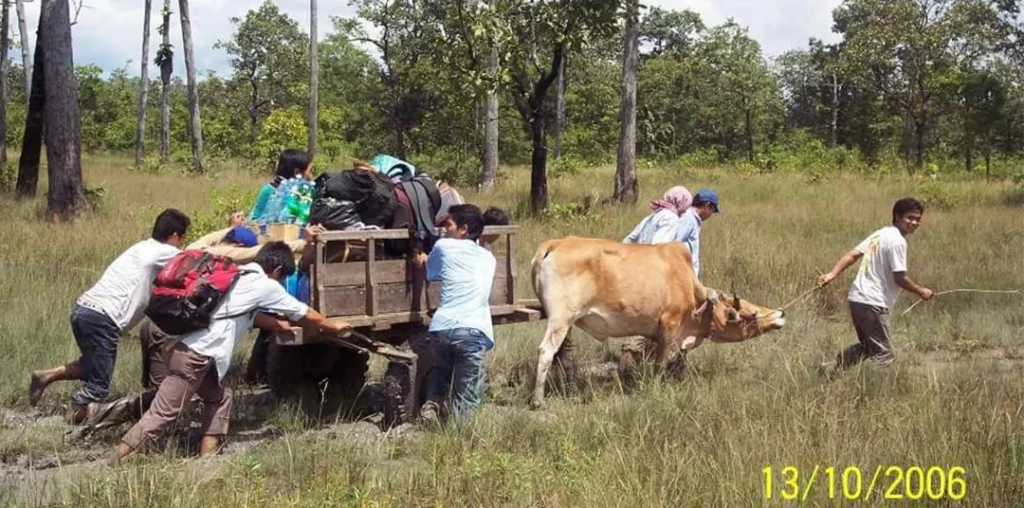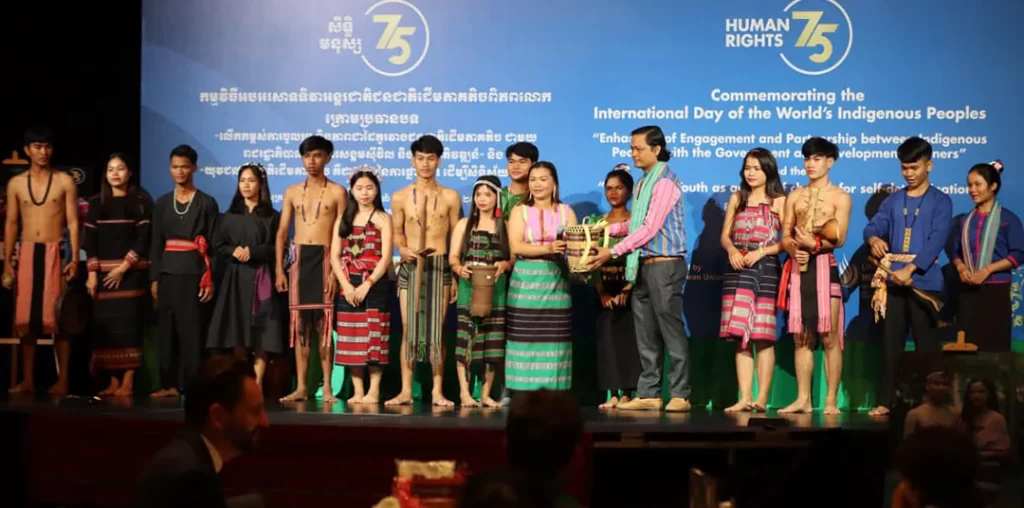

Global context
There are 476 million Indigenous Peoples living globally, equivalent to 6.2% of the total world population, in there are more than 5,000 diverse Indigenous groups (based on UN statistics). The same source cited that indigenous people are living three times poorer compared to their non-indigenous counterparts. Key issues faced by Indigenous Peoples include unrecognition of their rights in managing their development based on their beliefs, needs, and priorities; lack of political representation; and lack of access to social services. Often, Indigenous Peoples are excluded or poorly represented in decision-making processes on issues affecting them, or they are not consulted about development projects or administrative measures that affect their land.
Cambodian context
Indigenous peoples in the Kingdom of Cambodia, comprising about 1.11% of the total population, practice traditional lifestyles and agricultural practices. They live in various provinces, including Ratanakiri, Mondulkiri, Kratie, Preah Vihear, Kompong Thom, Stung Treng, Udor Meanchey, Kompong Cham, Pursat, Kompong Speu, Koh Kong, Battambang, Preah Sihanouk, Banteay Meanchey, Siem Reap, and others.
Most of the Indigenous Peoples in Cambodia depend their lives on land and forest resources for their traditional agricultural occupations for their living, which have been cascaded and practiced. Utilizing lands includes actual cultivating land, reserved land for rotating crops, rice fields, and other agricultural farming. Natural resources are considered as a “free market” and do not require cash to buy, but could collect various types of non-timber resources such as vegetables, fruits, fish, traditional medicines, etc. Currently, Indigenous communities are facing many issues, including the harming of practicing rotational farming, land issues, and debt issues in most communities. Through this context, Indigenous youths are also affected by their education. Indigenous youths have a very low percentage of access to higher education compared to the majority of people.
Their livelihoods depend on the natural environment, but they face hardships in transportation, health, and education. In response, the government established the Committee for Strengthening and Development of the Northeast Region in the 1980s and early 1990s to promote development in all sectors. The infrastructure in these locations is very poor, but they are rich in natural resources. Migration and economic development in other parts of Cambodia have almost negatively impacted the Indigenous Peoples’ security of land and natural resource use management, such as illegal logging, non-participatory concessions, and land encroachment. Furthermore, these provinces are poor in accessing information and other public services like education and health, which limits Indigenous Peoples’ capacity to manage internal and external problems they are experiencing concerning these issues.
Education context
National Policy on Development of Indigenous Peoples, which highlights the commitment of the Royal Government of Cambodia to promote Indigenous Peoples in education. The state prioritizes the reconstruction and development of human resources to meet the social needs, interests, and wishes of indigenous peoples. It organizes a comprehensive educational system, providing opportunities for children, young men, women, and citizens. The state also provides physical materials, curriculum reform, dormitories, study scholarships, and teacher deployment in areas with teacher shortages or absences. Non-formal education, including literacy, arithmetic, life skills, work skills, and fundamental education, is provided to those who cannot access formal education. Vocational training is also provided for indigenous peoples, focusing on practical knowledge and vocational skills in areas other than farming and livestock farming. Teacher training programs are developed by selecting candidates from indigenous communities, focusing on knowledge based on custom, culture, technical sciences, and communication. The state includes indigenous cultures, faiths, and traditions in its study curricula. Community study centers are established to facilitate community development and provide access to education and vocational training information.
Cambodia Education Strategic Plan (2024-2028), which strengthens the education system in Cambodia. The Ministry has condensed the priorities of the education sector into a single policy priority focused on “ensuring all Cambodians have access to quality, equitable, and inclusive education enriched with knowledge, skills, discipline, ethics, good behavior, health, fitness, and lifelong learning.” The Education Strategic Plan for 2024-2028 continues to concentrate on education reform at all levels and in all areas, particularly school reform.
The United Nations Declaration on Rights of Indigenous Peoples (UNDRIP), article 14, states that Indigenous peoples have the right to establish and govern educational systems and institutions that provide education in their own languages and using culturally appropriate teaching and learning techniques. Indigenous peoples, particularly children, have the right to an education at all levels and forms provided by the state, without discrimination. States must work with indigenous peoples to ensure that children, especially those living outside their communities, have access to education in their native language and culture.


The Association envisions that Indigenous peoples have access to quality education, foster strong solidarity, and achieve prosperity. It is committed to safeguarding their rights to use and protect their land, natural resources, culture, traditions, and identity, ensuring they can live with dignity and harmony on their ancestral lands.
#28, Sangkat Toultumpoung 2, Khan Chamkarmon, Phnom Penh
Phone: +855 97 913 3330
E-mail: info@ciyanet.org
Website: ciyanet.org
